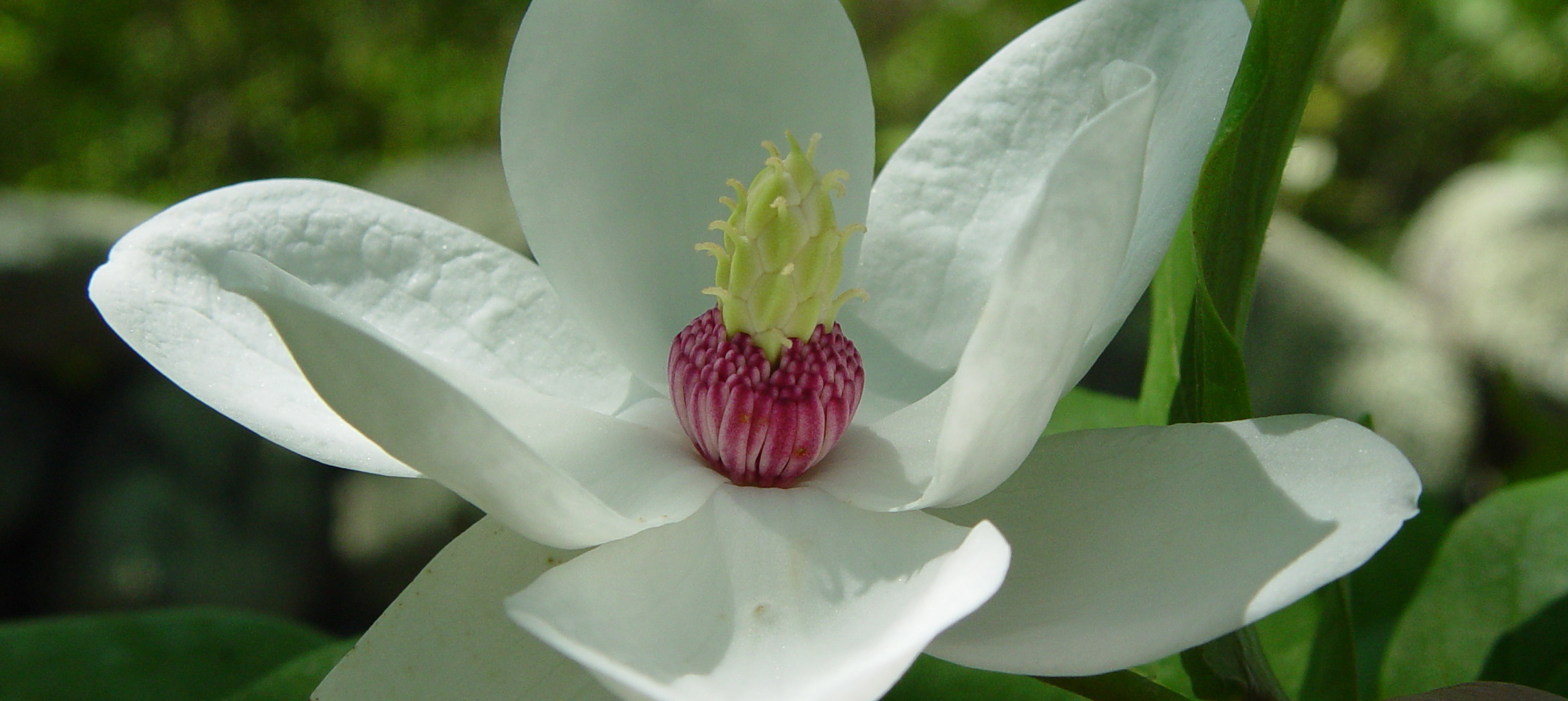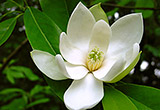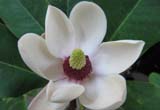Getting Started With Magnolias

Magnolia sieboldii
Magnolias are prized worldwide for their flowers and forms. Growing as large shrubs or trees, they produce showy, fragrant flowers that are white, pink, red, purple or yellow. Some forms are evergreen with glossy and leathery leaves and some evergreen types have buds, stems and undersides of leaves that are covered with attractive gold to copper to brown felt-like hairs. There are more than 200 species of Magnolia native to temperate, subtropical and tropical areas of southeastern Asia, eastern North America, Central America, the Caribbean and parts of South America. Many are now grown worldwide because of their beautiful flowers, shape and form.
How do you know if a magnolia is right for you? Ask the following questions to help determine if you should consider a magnolia -- and if so, where best to plant it:
What kind of winters do you have?
The easy way to answer this question is to figure out what “zone” you live in. The U.S. is divided into zones by the USDA depending on how cold the winters are. Similar hardiness zone maps are available for Australia, Canada, China, Europe, and Japan and many other regions are developing maps.
Magnolias are available for almost any climate, especially if you can provide protection from harsh conditions.
What kind of light does your garden receive?
Magnolias prefer a spot in the garden that receives full sun to light shade. That said, if you live in a particularly warm or dry climate, your magnolia might benefit from a location shaded from the hot afternoon sun. If possible, avoid exposed, windy locations because strong winds can damage large flowers and the typically brittle branches.
What kind of soil do you have?
Most magnolias grow best in moist, well-drained, slightly acid soils but neutral to slightly alkaline soils are also suitable for growth. Magnolias are adaptable to clay, loam or sand soils, but most grow poorly in wet or poorly drained soils. Well-established plants can be moderately drought tolerant.
Which magnolia is right for you?
So many choices, too small a garden. When you start looking into magnolias, you will want one in every bed! Some magnolias are grown primarily for their flowers, usually in the form of a shrub or small tree. Other magnolias grow to be large shade trees, and yet others are used as evergreen shrubs, trees or hedges. Consult our Magnolia Cultivars Checklist for options and consider visiting one of the gardens listed on this map to get an idea for the kinds of magnolias that are likely to do well in your climate.
What are some of the common types of magnolia available at local nurseries?
Star Magnolia: Those of you living in colder areas may already be familiar with Star Magnolia, Magnolia stellata. This magnolia is one of the best known species because it is very cold hardy (USDA Zones 4-8), widely adaptable and blooms when very small. Star Magnolia is a slow growing, broad spreading, small tree or large shrub, ultimately reaching 15 feet tall or more. Leaves may be 4-8 inches long and up to 3 inches wide. As a deciduous plant, the dark green leaves drop in fall, sometimes turning yellow before falling.
Star Magnolia flowers are 3 to 5 inches in diameter with 12 to 40 petal-like parts called "tepals." The overall effect of the tepals is that of a starburst, hence the name, "Star Magnolia." Flowers are white, although a few cultivars have pinkish flowers. Star Magnolia's characteristics have made it popular as a parent of many hybrids.
Saucer Magnolia: Saucer and other large-flowered hybrid magnolias are deciduous trees known for their spectacular display of flowers appearing before the foliage in late winter and early spring. They are considered some of our most beautiful flowering trees, and some cultivars are hardy into USDA Zone 4 while others are adaptable in warmer Zone 9. These deciduous flowering magnolias generally are considered small trees with slow to moderate growth rates. Smaller cultivars may be grown as large shrubs and some larger trees may eventually grow 40 to 70 feet tall. Tree shape characteristically is upright to rounded when young and becoming rounded or broad-spreading with age. The medium green leaves are oval to circular in shape and vary in size from 3 to 10 inches long and 2 to 10 inches wide. Leaves turn a nondescript yellow to brown before dropping in fall. The trunk has smooth, tan or grey bark and branches exhibit large, fuzzy flower buds.
The fragrant flowers open before the foliage and range in color from white to pink to purple. Often flowers display one color on the outer side of the tepal and a lighter color inside. Many different cultivars or varieties have been selected over the years. Characteristics vary with the cultivar but flowers range from 3 to 12 inches in diameter. Peak bloom usually occurs in early spring; because of this, flowers are sometimes damaged by frosts. Some cultivars produce flowers sporadically through the summer and fall. Reddish fruits sometimes develop in the fall.
Southern Magnolia: Residents of warm temperate climates (USDA Zones 7-9) may be familiar with the Southern Magnolia. This native of southeastern North America was first introduced to Europe in 1731, and quickly became popular because of its glossy evergreen foliage, large beautiful flowers and elegant form. Growing as a small to large evergreen tree, Southern Magnolia also was found to be widely adaptable to different climates, soils, and exposures. Thus, it was the first Magnolia to be planted widely as a street or shade tree and is now grown nearly worldwide wherever suitable climate and soils exist.
Southern Magnolia has glossy, leathery, evergreen, oval-shaped leaves that are 5 to 8 inches or more long and half as wide. The upper leaf surface is dark green and the lower surface is often covered by brown, dense, felt-like hairs. The fragrant white flowers are 8 inches in diameter, appearing in late spring and intermittently throughout the summer. The flowers are followed by reddish, 3- to 5-inch long, oblong-shaped fruits displaying red seeds ripening in late fall. This species is extremely variable in size, shape, habit, growth rate, canopy density, leaf color, and flowering season. This variability has allowed a large number of beautiful cultivars to be selected.
Southern Magnolia is used as a specimen plant, street tree, shade tree, screen or windbreak. This tree also can be grown as an espalier.
Champaca Magnolia: Many magnolias grow in subtropical and tropical climates typical of USDA Zones 10-12 and warmer. Champaca Magnolia is a native of southeastern Asia famous for its extremely fragrant creamy-white, yellow or yellow-orange flowers. The small flowers are produced in large numbers because they form all along the branches and not just at the stem tips as with many other magnolias. Champaca blooms from spring through summer and sporadically flowers in winter. Its fragrance is so beautiful and powerful, it is used to make perfumes.
Champaca Magnolia is often grown in humid subtropical and tropical areas because it is valued for its form as an evergreen tree as well as its floral fragrance. Champaca Magnolia's typical size in the landscape is 30 feet tall and wide, though this tree may grow much larger with time.
Many new magnolias have been discovered in tropical areas of Asia and South America, and these may become more available in the future.
What time of year should you plant a Magnolia?
Deciduous magnolias (those that drop their leaves in fall) are best planted when dormant, typically in late fall or winter in warmer climates and early spring in cold climates. Evergreen magnolias are best planted in early spring. For the first 6 to 12 months after planting, both types will benefit from mulch and regular irrigation during warm or dry weather.
How should I plant my magnolia?
- Gently remove the upper layer of soil from the container or root ball until you expose the topmost root. It should be within the top 2 inches (5 cm) of the surface.
- For balled trees, remove any root ball coverings (such as burlap). For a container plant, remove the container and make four evenly spaced slices down the sides of the root ball. Use a knife, trowel or shovel to make 1-inch (2.5 cm) deep slices. This process helps eliminate circling roots that otherwise might constrain root growth.
- Dig a hole at least 1.5 times as wide as the container or ball.
- Dig the hole slightly less deep than the depth of the root ball.
- Place the root ball so the upper most root (uncovered in step one) is even with or slightly above the surface of the surrounding undisturbed soil. In the case of clay soil, the root ball should be placed so the upper most root is higher than the undisturbed soil surface so that 10-33% of the root ball is exposed.
- Fill the hole around the root ball using soil you dug out of the hole. Firm the soil to eliminate air pockets but do not overly compact the soil. Some people will partially fill the hole, irrigate, then allow water to completely drain before filling the rest of the hole with soil.
- Do not cover the top of the root ball with soil. You may apply a thin layer of mulch over the root ball.
After planting, irrigate two times per week (cool climates) to three times per week (warm climates) for the first three to six months, and weekly for the rest of the growing season. Apply 2-3 gallons per inch (3.0-4.4 liters per cm) of trunk diameter. Place a layer of mulch around the plant that is at least 2 inches (5 cm) thick (thicker for light mulches like pine needles). Fertilizer is not necessary at planting.
For more information, contact a local nursery grower or a local Extension office, agriculture/horticulture agency or gardening organization.
Where to go to buy my Magnolia?
Check with your local retail nursery or garden center. They may know which magnolias grow well in your area and will have these for sale. You may need to look for specialty, rare or new magnolias at "better" garden centers or from an online magnolia nursery. Consult our list of magnolia nurseries for suppliers specializing in this family.
What should you look for when selecting a magnolia?
Look for healthy magnolias with evenly spaced branches. A container-grown plant can be slipped out of its pot to inspect the roots. Healthy roots are white, whereas diseased roots are brown to black and often have a sour odor.
Avoid plants with:
- spotted, discolored or distorted leaves
- discolored stems
- broken branches
- crossing and rubbing branches
- wounds on the main trunk(s)
- discolored roots
- swollen areas on stems or roots (however, note that grafted or budded plants sometimes have swollen areas where the bud or graft was attached; check with nursery personnel to determine if this is the case)
- many circling roots just inside of the container indicating the plant may be rootbound, making the plant more difficult to establish and often resulting in poor long-term growth and survival.
Related links
Check out our Magnolia Cultivars Checklist for more information on the varieties that might be available at your local nursery.
Find out where to go to see magnolias near you using this Google map.
Have a question about your magnolias? Send it to us.
Use this listing of magnolia suppliers to find a nursery online or near you.



